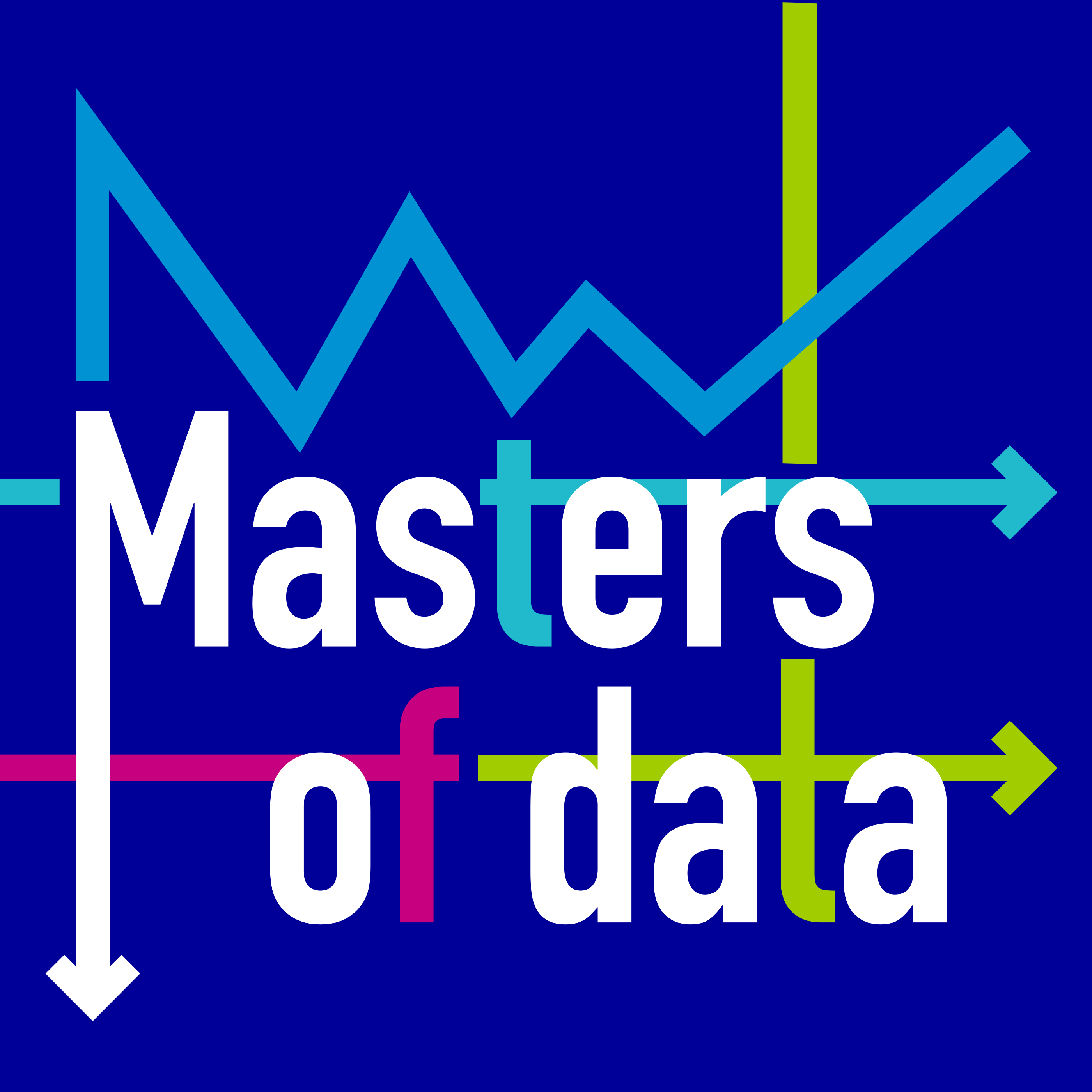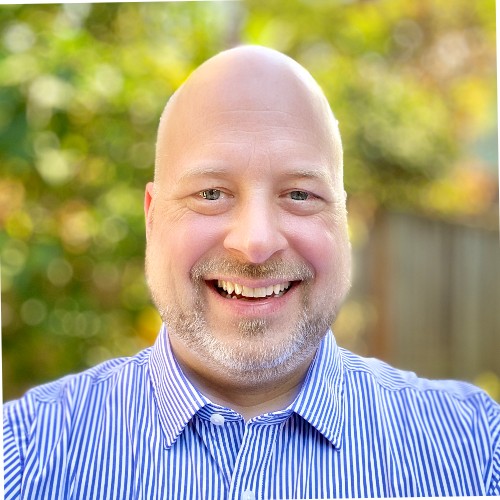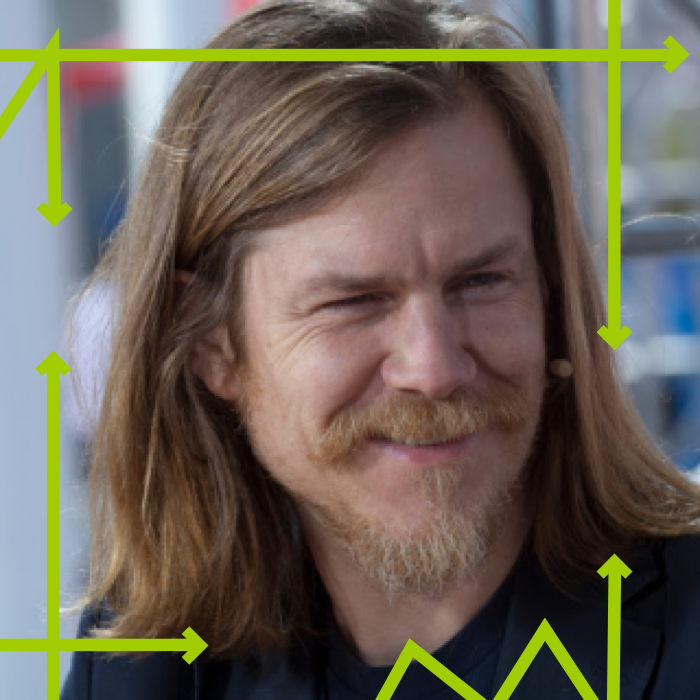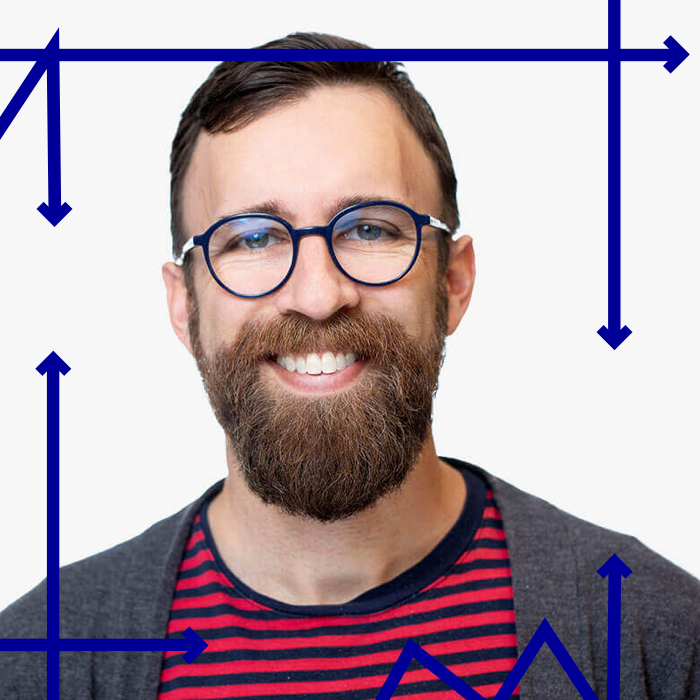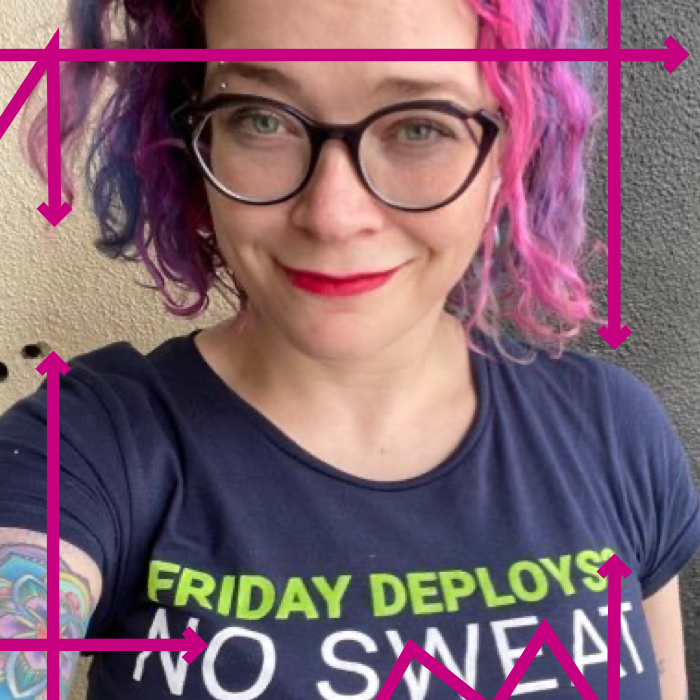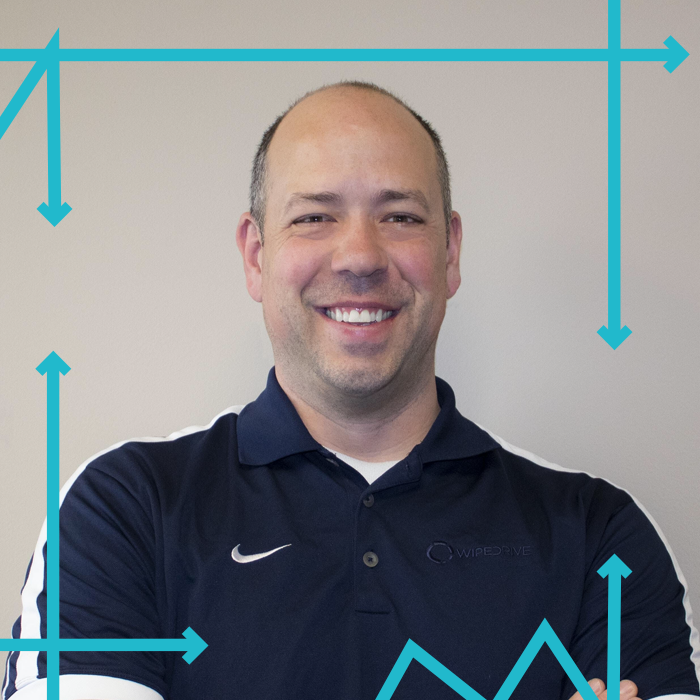Saving Lives with 3D Printing (Guest: Jeremy Proffitt)
- 0.5
- 1
- 1.25
- 1.5
- 1.75
- 2
Ben Newton: Welcome to the Masters of Data podcast, the podcast that brings the human to data. I'm your host, Ben Newton. Welcome everybodyto another episode of the Masters of Data podcast. This is a special one because number one I'm recording from my home office under a isolate- in- place order. That's a little new. Also a really special guests here, someone I've known for a while. I'm really excited to have him on. Jeremy Prophet, he's a internet of things engineer. He is a multi- talented individual like we're going to find out today. Welcome, Jeremy. It's really good to have you on.
Jeremy Proffitt: Yeah, great to be here.
Ben Newton: We've been having little technological problems this morning. I think we finally got something that's going to work. I guess everybody's having little problems with technology working from home these days. We're getting there. But what we want to talk about today is Jeremy is doing some pretty amazing things with 3D printing to help out during the crisis. I want to talk about that. But before we even get into that, we talked about you've actually been into 3D printing for a while. Maybe just tell us really quickly about how you got into 3D printing and now that became kind of a skill set of yours that you could share.
Jeremy Proffitt: I think for me it just became this want, this need to have some kind of creative outlet that wasn't on the computer, that was tactile, that you could fix things, you could make things, you could solve problems. 3D printing is all of those things. It's problem solving when your printer breaks. It's how do you get this to print better? It's all of this amazing thinking and building and creating and doing that's not on the computer, that's tactile. I think getting away from our desks once in a while is a good thing. This is my outlet.
Ben Newton: I think that's pretty cool. You've actually done some pretty sophisticated things already at home, right? You're not just printing little small one- inch figurines or something. You've actually done some pretty sophisticated stuff, right?
Jeremy Proffitt: Yeah. I mean we do multi- color printing. We can do a four- color print. We can print objects up to 24 inches tall. Wehada 23- inch dragon if you can imagine, it was 3D printed.
Ben Newton: That's awesome.
Jeremy Proffitt: Just all kinds of amazing things we can do. Yeah.
Ben Newton: I think it's pretty neat. It's always something that I've wanted to learn how to do. You've got this really cool skill that you've developed, something that you kind of had done for fun. It got more and more sophisticated over time and then the pandemic happens and you get involved by bringing that skill to the table. Tell mealittlebitabout it. It'sa really interesting story. Start at the beginning. What was the thing that turned this skill you've developedinto something where you could actually give something back?
Jeremy Proffitt: Wetalk about giving back, I've always been a proponent of volunteering. I volunteer at oneof the fab labs at one of the schools. Anytime they have a project where they're dealing with like Bluetooth or wifi or microcontrollers and they need a helping hand, I come outandhelp the kids with their projects. I've got a good relationship out there. I got a call from Tom who runs the fab lab over at Charlotte Latin. He got a call from one of his kids. Her mom's a doctor and they were just talking abouta 3D printing that happened in Italy to solve a problem there. Knowing that there's lasers and CNCsand 3D printers at the fab lab, the question was," Well, what can we do here in Charlotte?" That just from then on it just spiraled. Imagine doing a startupand in like a week. I'm not kidding. I got called to build some prototypes. We've got around 30 printers here at the house, varying types and sizes and whatever. I just got a call to see what I could do to help and if we could what we could do to print. We started looking at everything that was out there from masks to face shields to valves to ventilators. The cool thing is we started talking to the medical professionals too. There was this one phone call Friday morning with a number of doctors and nurses and medical professionals from the state and from the city and from hospitals. The one thing everyone said was that face shields, there's a huge vacuum. It's getting face shields out to people that would help prolong the life of the ever so rare N95 masks that the staff were using to project themselves, especially during intubations and things that really can, not be messy, but have a higher impact if something goes wrong on the medical professional. I started immediately printing designs and seeing whatwas working. We got a hold of some clear plastic, PTG, for the front of the face shields. We just started building. We didn't know where we were going or how this wasgoingto progress, but we just started building. Then by theendofthe first weekend, we had 60 face masks in the field. We had doctors and nurses giving us feedback. We had new iterations and new versions going out. We started to bring in UNCC and the hospitals. We had doctors that were joining us on regular cadence calls. It just from there skyrocketed into now were a week and a half into this. We will have injection molded parts to replace what we're 3D printing right now Sunday.
Ben Newton: Wow.
Jeremy Proffitt: That's unheard of. It's this collaboration of all of these amazing people in the community coming together and building this network of people. Who do you know? Who can we get involved? How can we help? Using andjust seeing whether it's the moms of Charlotte Latin or the UNCC has got some amazing engineering staff that has been able to help us to just people that we know and getting them on the phone andsaying," Hey, I know this guy." Or" I know this person." Or," I know," and just getting those people involved has been a whirlwind beyond anyone's belief at this point.
Ben Newton: It'sprettyamazing.It's kind of in times like this where kind of things allkind of come together, a lot of different things it would take months to do otherwise everybody's minds are really focused. It kind of brings out the best in people. I think that's really neat, Jeremy. Tell me a little bit about like just from like a, maybe this is the nerd part of me wants to actually understand how it works, but what does it actually mean when you're 3D printing a mask and now you're talking about moving to injection molding? What does that actually look like?
Jeremy Proffitt: From the shield we can 3D print. Obviously that's a slightly different process. Imagine taking a bottle of glue and running it around in circles and building up circle upon circle upon circle. That's kind ofhowwe 3D print. We just build up layer by layer by layer of plastic. I can print about one face shield in three hours. Injection molding you take and you inject hot plastic into a mold, you wait for it to cool and then you pop it apart. Kind of like taking ice out of an ice tray.
Ben Newton: Yeah.
Jeremy Proffitt: Then the advantage there is you have a machine that continues to do that and you can create1, 000 a day. Now I can create about60to 80 face shields a today because I have a lot of 3D printers. But it's rare thatyou have somebody that can do as many as I can. While we're pushing out 200 face shields a day through all of our volunteer networks, imagine if we ramp up to1, 000 a day and then we take that mold that we know is working. You take that design and you get with other 3D mold manufacturers, we're looking at ramping up to see thepossibilityof4,500 face shields being created per day.
Ben Newton: Wow, that's pretty amazing. Is the injection molding something that still happens withthe 3D printers or is this something that's happening in a factory now?
Jeremy Proffitt: Oh, no. Injection molding normally is about a$ 10,000 setup fee per part. The part costs you$ 10, 000 then there are about$ 2 a piece after that. It is definitely a manufacturing process.
Ben Newton: When you started out before the injection molding things, you said you had a volunteer network. Talkalittlebit about that. Is it basically other enthusiasts with 3D printers and you gave them the 3D model or how did that work?
Jeremy Proffitt: Yeah, there were a couple of things that drove it. There was a GoFundMethatwas started. We've raised around$75, 000 in a week.$ 40,000 of that wasinthefirst 48 hours, which was an amazing response, right? I think people saw that and then they wanted to know how they could help. We had different Charlotte maker's space and different universities and different engineering people. I think social media drove a lot of this. I would post on my Facebook page," Hey, we're doing this GoFundMe. We're 3Dprinting here. We're doing these things." I would have friends of mine reach out to me and say," Hey, Jeremy. How can I help? What can I do?" You multiply that times 30, 40 people on the core team. Then those people tell a friend and they tell a friend, especially in a timewhen we're really wanting to be a lot more social, we're turning to things like Facebook and LinkedInand Instagram and all of those different online sources. I just think that explosion of social media combined with everybody kind of wanting to reach outandbeapart of something has just made this project explode.
Ben Newton: I mean, it's pretty amazing.It'sa pretty amazing story. If I understand it right, you kind of get started with a couple of connections that you have with some doctors, friends, you start experimenting, getting the feedback. You start expanding it out to a volunteer network witha GoFundMe campaign, other people are kind of joining the effort. Then you talked the injection molding phase, so is it moving into a different phase now where you're basically handing this off to manufacturing partners in the Charlotte area or what does that look like?
Jeremy Proffitt: Yeah, it's becoming quite a multi- threaded effort. We've started bringing aboard a professional fundraiser. We've had to seek some advice as far as nonprofit status and getting involved in the accounting and everything like that. There's people working on media. We've got a team dedicated to a website now, charlottemedi. com, M- E- D- I. com. We have a team that's working on the packaging and logistics. When you get 4, 500 face masks in a day, you've got to assemble them. You've got to put them in bags, make sure they're safe to use. So sterilize them, clean them, box them up. Then you need trucks to deliver them to EMTs and everyone else. Then you've got the manufacturing process, which we're looking at version one of the manufacturing process. Then while we're looking at that, we're also 3D printing different ideas as new ideas come out there, we're printing those and trying those in the field. We've got a team dedicated to reflecting the feedback from the doctors and the nurses because that ultimately is key. We were calling it medical reliability, how they fit, whether they work, there's this huge multi- threaded effort all driving forward at the save time. It's just phenomenal.
Ben Newton: That's pretty amazing. It basically grew up from just a few people trying tohelpforeachother and now you've grown into basically a manufacturing operation. I think that's pretty awesome.
Jeremy Proffitt: Yeah. We absolutely had no clue where this was going. All we had was a few dedicated people who were willing to try to change the world. I think we're doing that in amazing ways thatweneverthoughtwewould,involumesweneverthoughtof,intermsthat we'd never thought of. No one's skipping a beat. It's amazing. Everyone justcomestogether and do all these amazing things.
Ben Newton: Yeah. It's great. It's pretty amazing to see that lots of different people doing things like that in this time. Where does it go from here, Jeremy? I mean, what's the next thing here? Is it just going to kind of keep getting bigger, bigger manufacturing operation? Are you seeing different people in different partsof the country kind of joining in or whatare you seeing?
Jeremy Proffitt: Yeah, absolutely. Once you have a working injection mold model, which is thehardest part, now we can start sharing those with different universities that have onsite injection molding capability. They may not have huge machines, but they've got machines thatcan print, that can generate 500 to2, 000 parts a day. Now we can take and start collaborating from, UNCC can start talking with Georgia Tech and Virginia Tech and all these different schools. They can start building out molds. They can start producing them. We can learn from what they're doing and they can learn from what we're doing. The collaboration between those can drive iterations and new versions." Hey, we're having a supply chain problem. Howdidyou solve it? We're having a volunteer problem, howdidyouguys solve it?" By bringing all ofthese people together over this immense network just gives us this ability to really build something so quickly. But when you've got the right people on, it's amazing how well you can do it right.
Ben Newton: Yeah. I think it's an amazing story how people kind of come together and like you said, just kind of start doing a startup in a week.
Jeremy Proffitt: Yeah, itis.
Ben Newton: I mean, at this pointas people listen to this and we share this out, what can people do to help?
Jeremy Proffitt: It's really simple. If you're in the Charlotte area, obviously go to charlottemedi. com, that's Charlotte, M- E- D- I. com. If you're interested in what we're doing here, we're collecting information about who wants to help. We'll collect the information about what agencies need, face shields. Beyond that, we're collaborating with different universities and groups around the areas. That's kind of going to grow out of Charlotte and just kind of spiderweb across the country. But the biggest thing if you want to donate, go to theGoFundMe and we're happy to take those donations. It's amazing how much people are just pulling money out of their pocket just to help with even small things like paying for their own gas to drive around to pick upthese face shields or distribute filament. Look at what you can do locally too. Look for local efforts like this. If you've got a 3D printer or you've got a marketing background, try to find these organizations in your own community and try to help them as well. We want to make sure that people are doing things aslocal as possible always when you're volunteering. We're happy to take a donation, but donations here are goingtogo to Charlotte and that area andstartspidering out. If you want to make a difference locally, look for people doing it locally. If no one is, then start something yourself.
Ben Newton: I think that's great advice. You're exactly right. I mean, it's all about kind of connecting with your local community and seeing how you can help. Even if it's doing errands for somebody that's older, making your own face mask or whatever it is, do what you can to contribute. Jeremy, this is pretty amazing. I've always known you as a smart and talented guy. But I think this is a pretty amazing story. I'm glad I was able to hear about it. I wish you all the luck. I think you guys are going to do some amazing things. You already have done some amazing things.
Jeremy Proffitt: Yeah, thank you. It's been tireless, sleepless nights that are just you get done at the end of the day and you've had four hours of sleep and you couldn't be happier with yourself. It's quite an amazing feeling, yeah.
Ben Newton: That's great. It'sjust something about given back that really kind of gets you through all that. Thanks Jeremy for your time. I definitely want to keep following what you're doing and I appreciate you spending time with us.
Jeremy Proffitt: Absolutely. Thanks for telling our story. We appreciate it.
Ben Newton: Absolutely. Thanks everybody for listening and listeningto Masters of Data. We'll continue doing cool episodes like this during this time. Watch out for the next episode in your feed. Thanks everybody for listening.
Female Announcer: The Masters of Data is brought to you by Sumo Logic. Sumo Logic is a cloud native machine data analytics platform delivering realtime continuous intelligence as a service to build, run, and secure modern applications. Sumo Logic empowers the people who power modern business. For more information, go to sumologic. com. For more on Masters of Data, go to mastersofdata. com and subscribe and spread the word by rating us on iTunes or your favorite podcast app.
